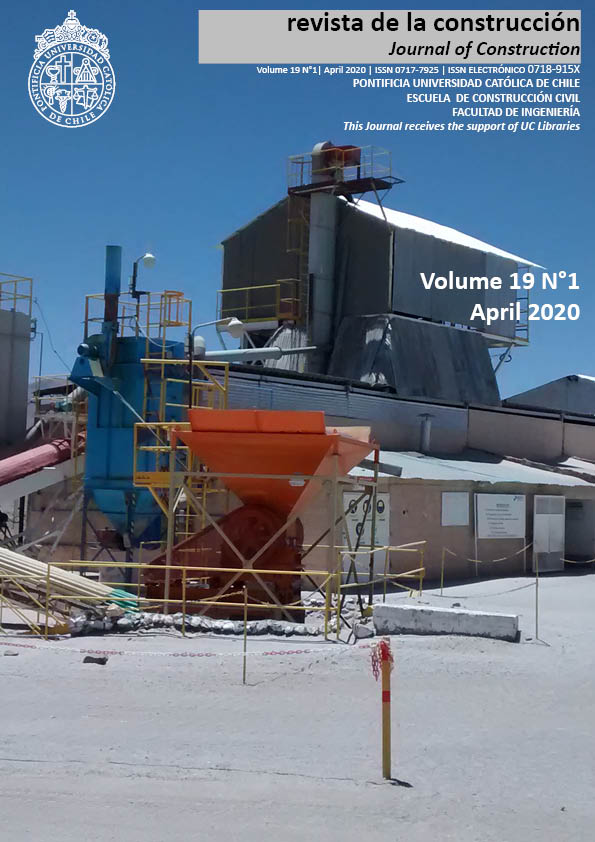Effect of curing conditions during the first 24 hours after casting on the properties of mortar mixtures
DOI:
https://doi.org/10.7764/RDLC.19.1.68-79Keywords:
Mortar mixtures, curing conditions, water absorption, compressive strength, ultrasonic pulse velocityAbstract
As it is well known, the curing method directly affects many properties of cementitious composites. In previous studies, the effect of different curing conditions on the properties of the cementitious systems has been generally investigated in the period after first 24 hours after casting. However, there are not many studies in the literature related to the effects of curing conditions on the specimens kept in mold during 24 hours after casting. In this study, strength development, ultrasonic pulse velocity (UPV) and water absorption capacity of mortar specimens subjected to steam-curing at different temperatures during keeping in mold for the first 24 hours after production were compared. In this regard, all mortar specimens were exposed to curing in a steam-curing cabin at 95% constant relative humidity (RH) under 5 different temperatures such as 20, 35, 50, 65 and 80˚C for the first 24 hours after the specimens were placed into the molds. Afterwards, the specimens were removed from the molds and cured in water conformed to the standard until the testing day. In this context, the water-cement ratio, sand-binder and slump-flow value of all mortar mixtures were kept constant as 0.485, 2.75, 25±2 cm, respectively. As a result, the application of steam-curing at high temperature for the first 24 hours positively affected the 1-day compressive strength and UPV values of the mixtures, while the 3,7 and 28-day compressive strength, UPV values and the 28-day water absorption capacity of mixtures were adversely affected.
Downloads
Downloads
Published
How to Cite
Issue
Section
License

This work is licensed under a Creative Commons Attribution-NonCommercial-NoDerivatives 4.0 International License.








